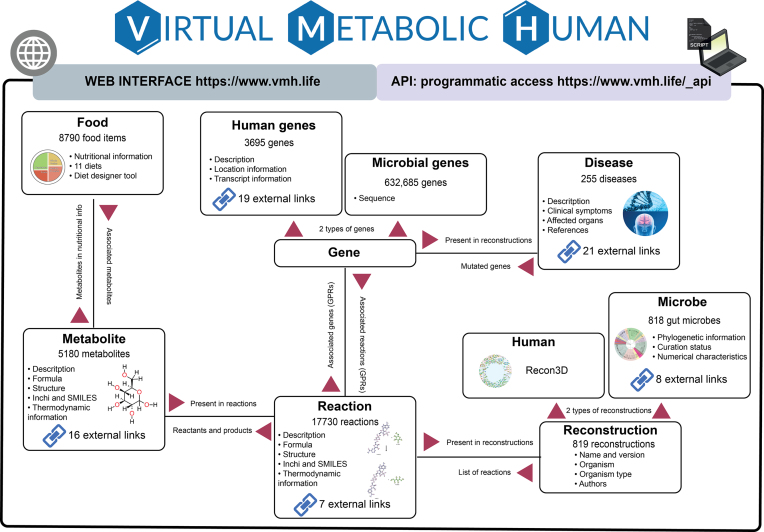Figure 1.
Overview of the Virtual Metabolic Human (VMH) database. The VMH database is divided into two interfaces, and its database contains five distinct but connected resources. Users can interact with the database using the two available interfaces: (i) a user-friendly web interface and (ii) an application-programming interface that allows programmatic access to the information contained in the database. At the core of the database is the representation of reconstructions as sets of reactions. The database connects the five resources through shared nomenclature: (i) the ‘Human metabolism’ and ‘Gut microbiome’ resources share metabolites and reactions, (ii) the nutrients in the ‘Nutrition’ resource are mapped to metabolites that can be shared by the human and gut microbes and (iii) the diseases in the ‘Disease’ resource include affected genes and metabolite biomarkers present in the ‘Human metabolism’ resource. Finally, the ‘ReconMaps’ resource is connected to the ‘Human metabolism’ resource via metabolites and reactions.

